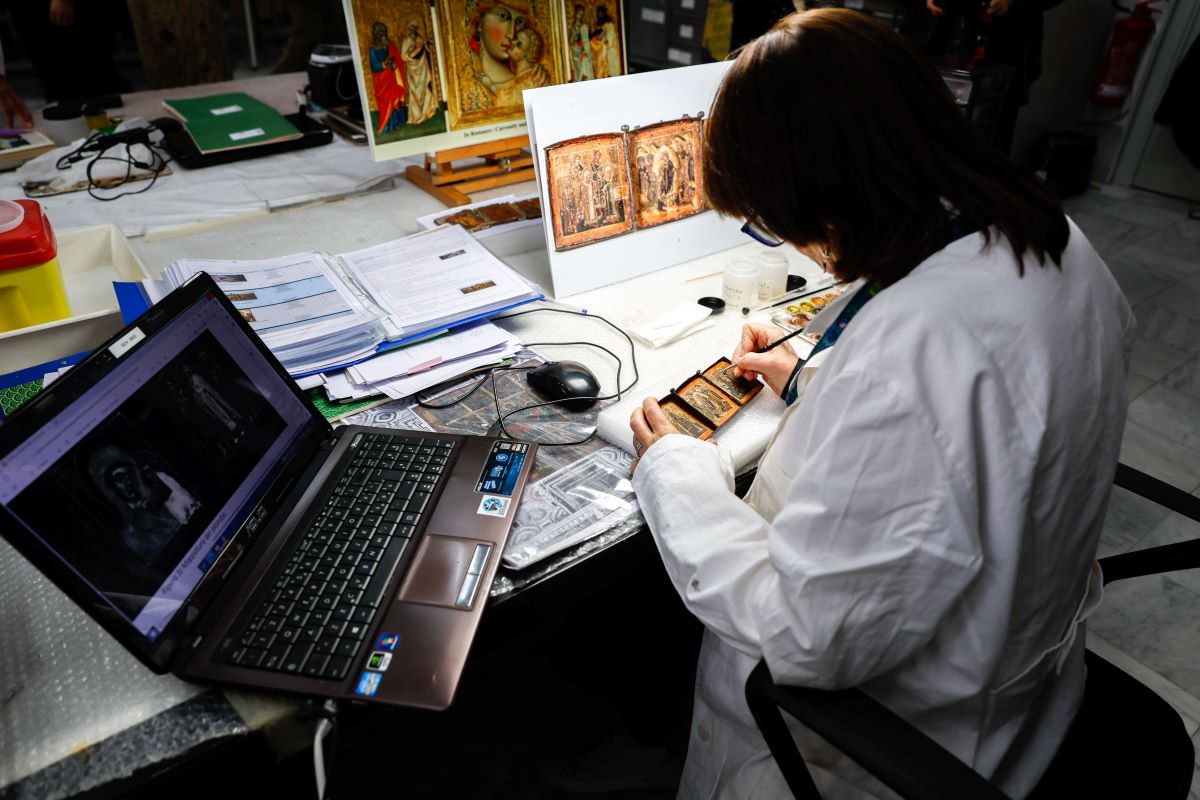By Carol Glatz
VATICAN CITY (CNS) — The Vatican Museums has launched an initiative to give visitors — online and in person — a “backstage” peek into the secrets, curiosities and insights discovered by their art restorers.
When cleaning, repairing and analyzing major works of art up close or with X-rays or infrared radiation, experts often find unexpected and hidden details.
The new yearlong initiative lets visitors learn more about some of the discoveries and view details concealed or hard to see in some 36 masterpieces.
The new digital initiative, “Beyond the surface. Through the eyes of the restorer,” was inaugurated at the Vatican Museums Dec. 11.
Wherever museum visitors see a self-standing placard with a QR code in front of a masterpiece, they can scan it with a smartphone to access about a dozen or more other images and explanations about the artwork that would otherwise be impossible to see. The exhibit is also accessible online as one of its “featured galleries” at catalogo.museivaticani.va.
For example, with Leonardo da Vinci’s St. Jerome in the Wilderness, there are closeups of the painting’s light blue sky, revealing the Florentine artist’s fingerprints from when he blended and spread the fresh pigments on the surface with his hand to blur the line between earth and sky, as it appears when seeing a distant landscape.
With Raffaello Sanzio’s The Coronation of the Virgin, images show the dull grayish color of Mary’s mantle caused by oxidation of the paints used during a restoration in the 1950s. More images show the stunning bright blue Raffaello had used from lapis lazuli after restorers removed the oxidized paints in 2019.
The initiative celebrates the 100th year anniversary of the establishment of the museums’ first restoration laboratory, which is dedicated to the conservation of all paintings, frescoes and art works made with wood materials belonging to the Holy See. That’s about 5,300 paintings and hundreds of thousands of square feet of wall paintings and frescoes, said Francesca Persegati, chief restorer of the Vatican Museums.
With an inhouse staff of 26 restorers and an additional 10 external collaborators, the laboratory is responsible for wood and painted pieces from every era: from ancient wooden Egyptian sarcophagi and Imperial Roman necropoli to a modern-day Matisse.
Among its most notable achievements, the lab was responsible for: the massive “restoration of the century” with the Sistine Chapel, which started in 1980 and was unveiled by St. John Paul II in 1994; the Raphael Rooms and the Borgia Apartment in the Apostolic Palace; the Holy Stairs near St. John Lateran; and the Marian icon of “Salus Populi Romani” (health of the Roman people), much venerated by Pope Francis.
Persegati said the museums’ restorers wanted to celebrate their lab’s anniversary by sharing their most cherished discoveries and methods of restoration with visitors who are so often overwhelmed by so much to see around them.
She said the restorers wanted to highlight their craft, defined by the first director of the museums’ laboratory, Biagio Biagetti, as “custodians of the most sublime pictorial poetry in the world.”
Editors:
The link to access the exhibition online in English can be found at:
https://catalogo.museivaticani.va/index.php/Gallery/1109/row_id/389935?lang=en_US






